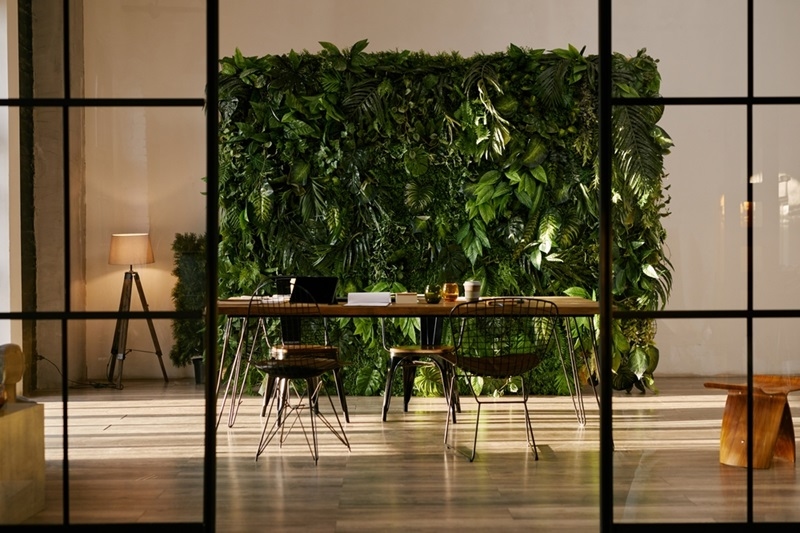
In a city of glass towers, neon lights, and endless digital noise, one could almost forget the simple calm of going into nature. Never really, the instincts would remember: Going to green open spaces is hardwired into us, and biophilic art is there to answer that call. It is not just about adorning a wall, though: It is about transforming a space so that it feels alive, restorative, and profoundly human.
Biophilic art is art with a purpose, to bridge the gap between people and nature. It uses natural materials, organic patterns, and nature-inspired imagery to trigger the same feeling of ease that we feel when we are outdoors. It could be a mossy green wall that is literally alive; a canvas that simulates the flow of water; or a sculpture carved from raw wood, but the intent is always the same: to foster an immediate, authentic connection between humans and nature.
This idea stems from the concept of biophilic, which finds its origin in "biophilia," implying that human beings basically possess an innate love for life and living things. This is certainly not just a passing craze in design; it is an acknowledgment of something truly ancient and instinctive-the fact that we find solace, creativity, and balance when we are surrounded by nature.
More to Discover: What is Resin Art and Why People Love it?
Biophilic art takes its cues from the same philosophy as biophilic design, which hinges on three main principles:
Once art-making choices are motivated by these principles, art will need to drop the sole role of decoration and act as an anchor that gives stability and life to a space.

The force of the biophilic art is in the method. The most powerful works are not only nature-inspired but embody nature.
Each technique works on a sensory and emotional level, making a room feel more open, calm, and alive.
So heading into 2025, biophilic-art trends are pushing even deeper into immersive, eco-conscious territory:
These trends aren't just about the aesthetic, they are about creating emotional and physical benefits in the spaces within which we spend most of our time.
Our brains respond positively to nature. Art that mimics those sights and textures actually lowers heart rate, releases tension, and builds up a feeling of calm. Hence an instant flutter in the feelings of difference as soon as you walk into a room with a forest mural or an art piece with flowing water.
Biophilic elements help restore a certain degree of clarity and alertness. At work, this ideally leads to enhanced problem solving and innovative thinking; at home, this encourages relaxation and the practice of being mindful.
From organic shapes to panoramic views, any reflection of depth in the visuals would suffice. The perfect imagery of nature could do wonders for a tiny apartment that feels cluttered.
Quite a few locations can't accommodate real plants. Biophilic art offers excellent emotional benefits without demanding all the attention, really good for an office, retail or space with less light.
Explore More: Unleash Creativity: Master Palette Knife Painting Techniques
Biophilic art is flexible by sheer size. A moss-photographed mirror upon an entrance corridor can uplift the spirits, while a full wall installation can change the whole feel of a lobby. The trick lies in balance, to have sufficient natural influence that will filter through the atmosphere but keep it from being overt.
Samples of implementation:
The green consciousness and wellness trends indicate that biophilic art will be increasingly appropriate. Artists are deliberately going multi-sensory now, using aroma, touch, or even temperature within their work. And designers have collaborated with botanists, sound engineers, and lighting experts to bring truly immersive, natural sanctuaries into interiors.
The message is: this interior trend, it's me, it's you, it's the people, the culture, something that terrifically connects us to what continues to make us human.
Don’t Miss: Most Famous Paintings in the World to Know
Biophilic art tells us that it doesn't have to be outside courtyard art to bank on our gains from nature. By applying biophilic theory to creative expression-meaning the three principles of biophilic design, changing biophilic art techniques, and watching out for biophilic art trends 2025-any environment is a potential sanctuary.
It is not about replicating nature. It is about conjuring spaces that breathe with nature, spaces that lift us up the moment we enter.
This content was created by AI